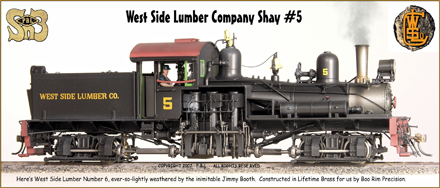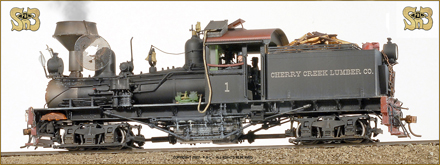|
|

|
|
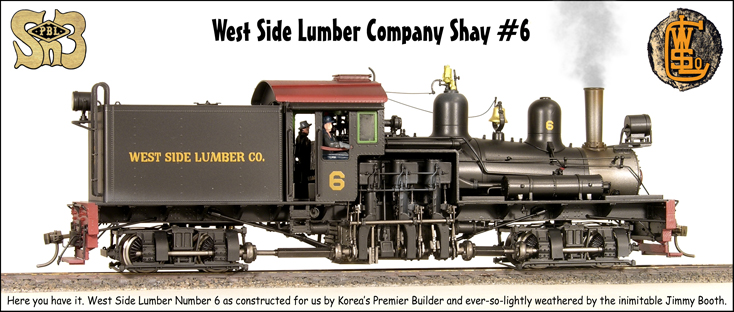
|
Here's a photo of one of the first ones "out of the hatch", as created by your
friend and mine, Jimmy Booth for yr fthfl svt. Isn't she a beauty ?
Click Here to see a Super Sized view of this great model, one that will fill yer screen ! ( Yeah, you could click on the photo and get the same result. 'Just checkin' to see if yer payin' attention. . . ) |
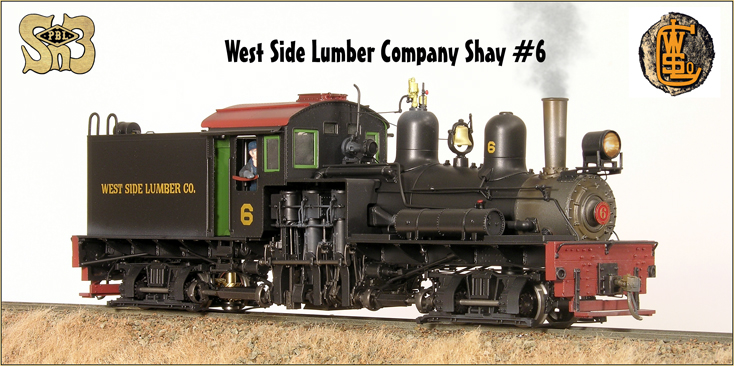
|
Here's another photo "Ol' Bills Shay", glidin' down the high iron. The West
Side kept their Shays lookin' pretty good. Aside from the fact that they'd
spend 3-4 months out of the year sidelined, (Because of WINTER in the Sierras.
), these shays were "Oil Burners", which were a whole lot cleaner burning than
their coal burning cousins back east.
And too, "normal" road engines kicked up a lot of dust and grime due to their speed. Shays, on the other hand, with their leisurely 16-18 miles per hour top speeds, were less inclined to kick up dust. A kinda "long way around" to explain why the #6 you see here isn't heavily weathered. But them's the facts. |
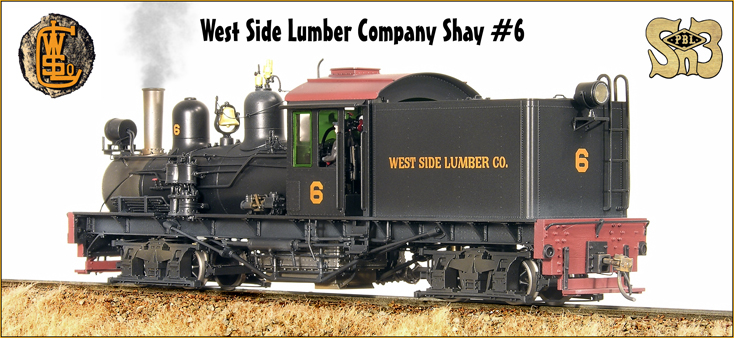
|
West Side Shay #6 bore Lima Locomotive Works production number 817, having
been delivered in December of 1903. She had her share of "incidents",
which may or may not have hastened her demise. According to Allan Krieg's Book,
"Last of the 3 Foot Loggers"
her final mishap was at "Deadwood Fill" in June of 1940, and she was never
rebuilt thereafter.
However, there are conflicting reports as to when she finally met the scrappers
torch;
The aforementioned
"Last of the 3 Foot Loggers"
indicates in one place that it was in 1940. But Allan also describes her going
into the ditch at
Deadwood Fill in June of that year, and says she remained there for at least
two summers thereafter. And
The Shay Web Site
lists her demise as occurring in 1950, if I read it correctly.
Not many photos exist of either #5 or #6, but heck, back when they were in
operation nobody much bothered to take photos of logging power. Logging
operations were more of a curiosity than "real railroads." So most
iconographers chose to shoot up their precious film on the more glamorous steam
power of the mainline roads. After all, that film was NOT cheap, and neither
were the cameras !
These models were available finished as our "conventional" and as Production quantities were quite small, with only 25 of the #6 produced. They have long since glided into the history books.
|
